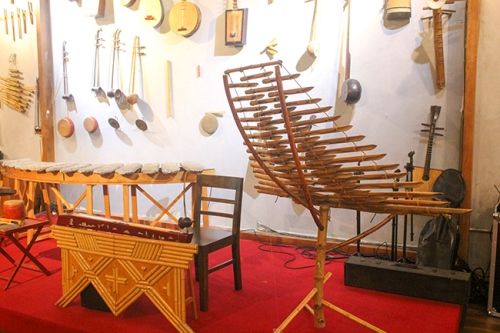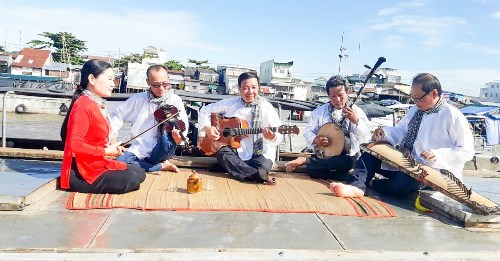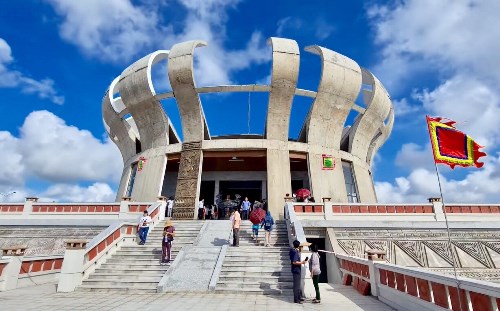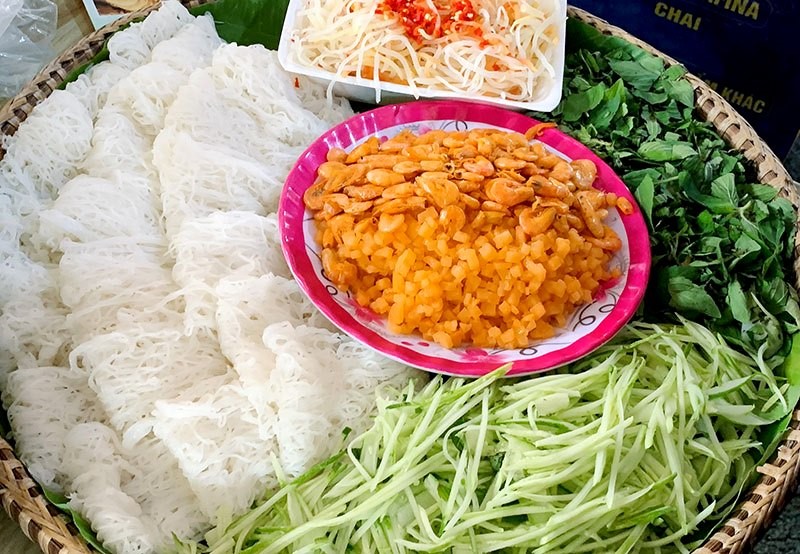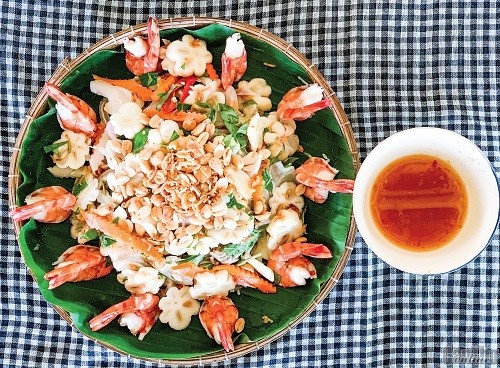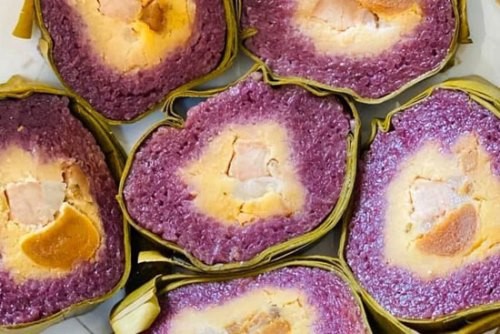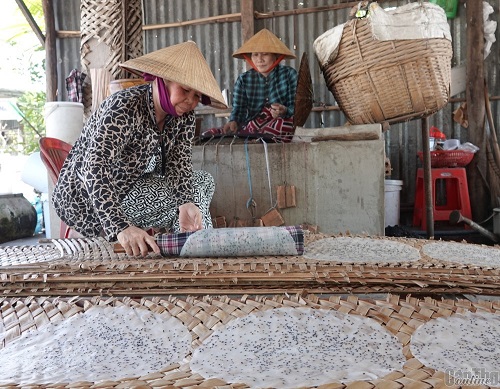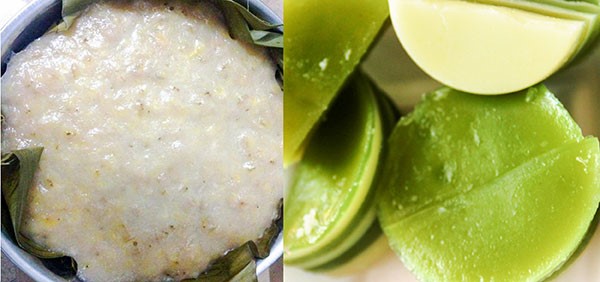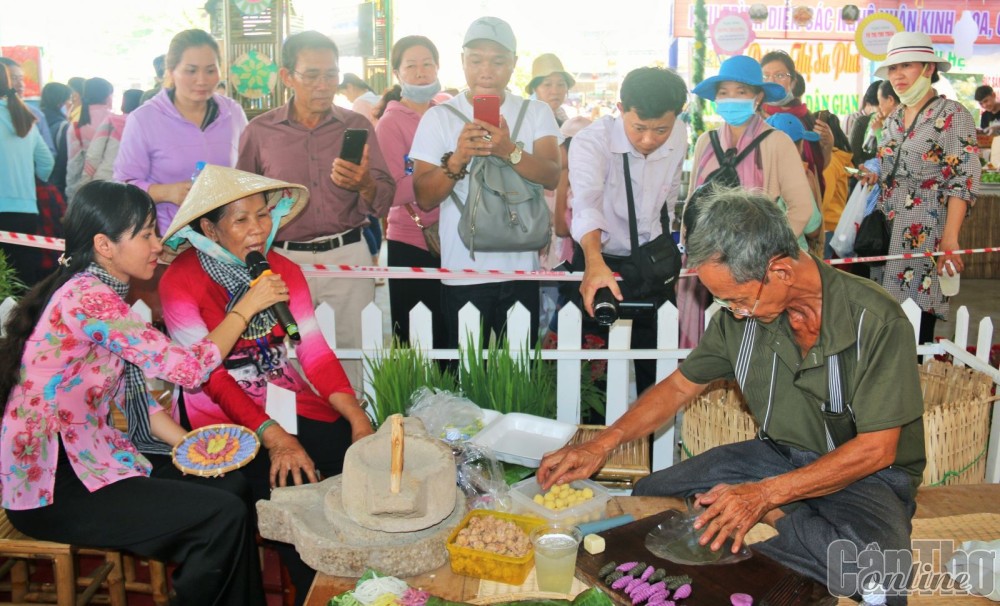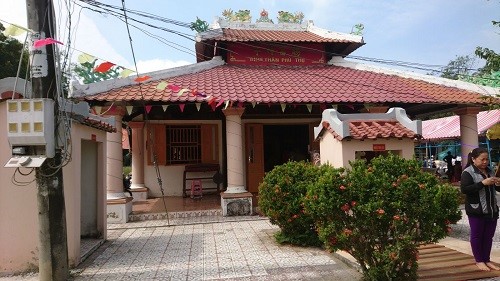
Cai Rang was primarily reclaimed in the vast strip of land in the western Hau River. At Cai Rang ditch near Ba Lang ditch mouth, there is a road crossing an immense field towards Rach Gia (Kien Giang Province) and another heading to Phong Dien (Can Tho). It could be stated that the first reclaiming step was smooth sailing. First of all, the fertile soil facilitates cultivation. Secondly, initially, there are three ethnic groups, Vietnamese - Chinese – Khmer. They have been reclaiming Cai Rang, supporting one another, and living in harmony. Additionally, people here put in great effort to construct and promote the development of Cai Rang. Not only does “clement weather, favorable terrain and concord among people” lay a solid foundation for economic prosperity, but it also formulates a concept of civilization in the countryside of Cai Rang - Ba Lang - Vam Xang - Phong Dien.
Phu Thu Village came into existence in the 13th year of Minh Mang (1832) under Dinh An Town. It was not until 1949 that it was called Phu Thu Commune. In 1976, Thanh An and Phu Thu Commune were merged into Phu An. There was an administrative boundary change of Phu An Commune in 2004. Part of the commune now is administrated by Phu Thu Ward, Cai Rang District, Can Tho City. Formerly, Phu Thu Village was formed on a high strip of land along the bank of the Hau River. Mother nature favors this place with fertile alluvium for cultivation. Nonetheless, local people have to endure plenty of hardships. Those origin-oriented explorers established the village’s communal institution to meet spiritual needs and engage the community. Therefore, communal houses were built one after another.
According to countryside-based research, Phu Thu Village used to have five communal houses built in the late nineteenth century and the first half of the twentieth century. However, nowadays, there are only four communal houses. They are Thanh An, Cai Doi, Phu Trung and Cai Sau. It is culturally unconventional to have many communal houses in a village. Noticeably, a large number of people kindly participate in the rituals regardless of which communal houses they take place.
Mr. Nguyen Huu Nang, Head of Cai Sau’s management board and some Phu Thu’s seniors said, Bung Binh Communal House was initially the only communal house in Phu Thu Village. It was told to be built before 1900 as its specific year of construction remained unknown. Local people believe that it is a sacred place to worship the village God (Than Thanh Hoang) and later on the national hero Nguyen Trung Truc. In 1915, the house was fired by the French colonialists and collapsed. For the time being, people rebuilt a wooden house for religious practice. During that period of time, the local mandarins and French troops relentlessly hindered folks from reconstruction for fear that it would be a gathering of the Communists.
It was documented that Thanh An Communal House was built in Xeo La Village in 1912, so people are accustomed to the name of Xeo La Communal House. At first, the house belonged to Thanh An Commune. Since the merger of administrative boundaries in 1976, it has belonged to Khanh Binh Area, Phu Thu Ward. After 1930, when the French changed the rulers of the land, the promotion of village communal houses’ reconstruction was put on the table and strongly supported by Vietnamese dignitaries in the village. However, there are some different viewpoints concerning both donations for the restoration and locations of the houses. In 1936, Mr. Ca Phuong, one of the wealthy and prestigious villager, had Cai Doi Communal House built (now in Thanh Hoa Area). In 1939, Mr. Le Van Thai (so-called Ham Thai) donated his own land and hired constructors to build a new communal house made of precious woods which consists of three adjacent blocks at Cai Sau River T-junction for village worshippers. In 1940, it was built and named Cai Sau Communal House (now in Thanh Thoi Area). After Cai Sau, District Chairman (anonymous) had Phu Trung Communal House constructed in 1942 (now in Thanh Loi Area).
On one hand, what all the aforementioned communal houses have in common is that they were constructed by the people in authority giving away their properties. On the other hand, the size of each house partly depends on their social status and financial potential.
Thanh An Communal House was established in 1912 with a total area of 1.273m2. It was renovated for the first time in 1998. Major ceremonies throughout the year are Ky Yen Ha Dien (Ending crop) Festival on April 17th and Ky Yen Thuong Dien (Opening crop) Festival on November 17th lunar calendar. According to regular administrative boundary documents, Thanh An is located in Khanh Binh Area, Phu Thu Ward, Cai Rang District.
Cai Doi Communal House was established in 1936. In 1953, it was relocated 100m away from its original place in Cai Doi River mouth. Major ceremonies throughout the year are Ky Yen Ha Dien Festival on April 26th and Ky Yen Thuong Dien Festival on November 26th lunar calendar. According to regular administrative boundary documents, it is located in Thanh Hoa Area, Phu Thu Ward, Cai Rang District.

People gathering in Thanh An Ceremony (Xeo La)
Cai Sau Communal House was established in 1940 in Phu Thanh, Phu An Commune, Chau Thanh District, former Can Tho Province. It was marginally renovated, with its area of 3.537,1m2. Major ceremonies throughout the year are Ky Yen Ha Dien Festival on April 20th and Ky Yen Thuong Dien Festival on November 20th lunar calendar. According to regular administrative boundary documents, Cai Sau communal house is located in Thanh Thoi Area, Phu Thu Ward, Cai Rang District.
Phu Trung Communal House was first built in 1942. It was not until 1964 that it was rebuilt with an area of 748,8m2 on the other bank of Phu Trung Ditch. Two major ceremonies throughout the year are Ky Yen Ha Dien Festival on April 19th and Ky Yen Thuong Dien Festival on November 19th lunar calendar. According to regular administrative boundary documents, Cai Sau Communal House is located in Thanh Loi Area, Phu Thu Ward, Cai Rang District, whereas, Phu Trung is in Thanh Loi Area, Phu Thu Ward, Cai Rang District.
Religiously speaking, those four communal houses are used to worship the national hero Nguyen Trung Truc. Cai Sau is the largest with a horizontal I-shaped structure. It includes a main ceremonial hall and in-house principled shrines. The other three were of basic structure as blocks of dozen-square-meter houses with a conical roof. Each house consists of a main ceremonial hall and shrines in all four directions.
As a rule of thumb, Ky Yen Festival does not take place on the same day, which is expected that the village God would have more time to attend every ceremony in the village. Moreover, the management board and residents of a communal house get to join other festivals as well as socialize and create community bonds with those of the neighboring. The communal houses’ representatives must stay connected and avoid conflict among local people.
* * *
“Bow down before the communal house”. It is a meeting place of cultural practice. The communal houses have periodically changed, but their cultural and spiritual values remain sustainable over time. The communal house and the village God are always held in high esteem at the back of people’s minds. All in all, the above facts of Phu Thu communal houses, to some extent, reflect the cultural diversity and history of Can Tho which have been passed down for generations.
Source: Can Tho News - Translated by Diep Truong





